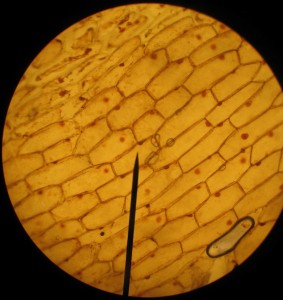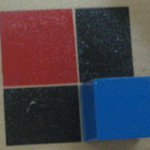One of my students is working on a personal project on ice dogs and how they aid polar exploration today and in the past. Amazingly, dogs are still used in expeditions that spend the winter on the ice, as shown in the video from the Tara expedition of 2006 (hat tip to Ryan):
Tag: video
Northwest Passage
The poignancy and romance of exploration are distilled in Stan Rogers’ ballard “Northwest Passage“.
Ah, for just one time I would take the Northwest Passage,
To find the hand of Franklin reaching for the Beaufort Sea;
Tracing one warm line through a land so wild and savage
And make a Northwest Passage to the sea.
–Stan Rogers (1981) from Northwest Passage.
The Bounding Main website has the lyrics, including footnotes about Franklin and the others mentioned in the song, as well as major geographic features like the Davis Strait and the Beaufort Sea.
History and art collide. The music sticks in the brain then seeps down to catch the throat. I think this is a great way to get into (spark the imagination about) Artic exploration.
The next step is, of course, Shackleton and The Endurance.
Exploration of the North American Coastline
This wonderful animation shows the exploration of the North American Coastline from 1500 to 1876, updating the map as the different explorers push further along the coastline. Most of the action occurs to the north, as expedition after expedition sough the Northwest Passage.
What’s nice, is that the names of the explorers, like Cabot and Franklin, should be familiar to students after this cycle’s research.
Powers of Ten online
The Powers of Ten video, which we use in the lesson on modern exploration is now online.
The Powers of Ten website also has a nice little interactive illustration that shows all the different scales.
Cells, cells, cells

We spent the afternoon period on science. I’d given some individual microscopy lessons during the last immersion, where we looked at exciting protozoans moving around in pond water. This time they tried their hands at onion cells and staining with iodine, using a very nice and clear YouTube video posted below (kyliefansunited, 2008) as a reference.

The immersion oil had arrived in the mail earlier in the week so we got to try out the 100x oil lenses. We can now see structures inside the nucleus quite nicely.
Other things did not go so well. I’d written up, using the excellent recommendation of Anna Clarke, what I though was a neat exercise to look at the effect of osmosis on the cells of a waterplant, Egeria densa. The small group struggled with it, I think in large part because they were not quite prepared (had not done the background reading), and weren’t working very well together today. I’ll keep it on the schedule, but next time I’ll have to think hard on if it will be necessary to tweak the exercise.
Mitosis resources
Our assignments for natural world usually combine some reading and some type of activity, but all the short video clips available online are a great resource, so I’ve been adding them to the studyguides as I find them.
The above two-minute, cell division video is a great example. Mitosis is a process, so it makes a lot of sense showing it as an animation, rather than discrete pictures in a figure. The video makes deciphering what’s going on in the diagram in the textbook a whole lot easier to understand, while the textbook diagram fills in the detail so the whole thing makes more sense.
There are also a number of useful interactive animations online. John Kyrk’s is quite nice. I like how the CellsAlive animal cell mitosis page lets you step through each frame in the animation.

Wikipedia, as is so often the case, also has some nice images.
Layered meanings
Daily life, for all its basic routine, is always popping up surprises. The human brain is attracted to mystery; it is after all just a fancy problem solving machine. David Mitchell gets up on his soap box to give a wonderful screed about how having sophisticated references tucked into childrens’ programming is a good thing and there should be more of it. Kids are naturally curious. If they’re interested enough they’ll look it up, and, in the age of the internet search engine and smartphones, the barriers to looking anything up are negligible. So include more Greek references in your discussions because although inciting curiosity in the internet age is a bit like opening Pandora’s box, you’re much more likely to get better results.

It also ties a bit into Montessori Philosophy. Students start “playing” with artifacts like the binomial cube in kindergarden, where the goal is to convey mathematical concepts is a solid, sensorial way. They don’t get into binomial formula until years later in algebra, but their familiarity with the cube allows them to take the step into the abstraction of algebra on familiar, safer ground.
This discussion also highlights one of the major advantages of using websites and hypertext for educational materials. References can be embedded in the text with links to credible sources even further reducing the transaction costs of the student having to search around the web trying to look something up. There is an argument to be had, however, on if hyperlinking is too distracting and reduces our ability to focus, but perhaps we need to work on study habits and using invisible hyperlinks rather than not using technology altogether.
(I discovered David Michell’s Soap Box via Somewhat in the Air, who notes that, “Few of David Mitchell’s posts are child friendly but the “Passionate about Sofas” is terribly funny, too.”)
Auto-Tune and the trajectory of fads
This intelligently done history of Auto-Tune is wonderful for several reasons. First, it has a simple, elegantly executed story arc, where it describes the trajectory of a fad from introduction to over-exposure to parody/remix and finally to a new equilibrium. And it discusses these concepts in a clear and entertaining way.
Know Your Meme: Auto Tune (featuring “Weird Al” Yankovic) from Rocketboom on Vimeo.
Second, Auto-Tune is a great example of something that was created for one purpose but finds a new life in a completely different discipline. The technology was created for analyzing seismic signals in petroleum exploration before being applied to music. It is amazing what can come from working with people of diverse backgrounds, and having a broad appreciation of the world. Group work is important.
Third, in touching on parody, it brings up an issue that adolescents, in particular need to understand; parody is not just a cheap joke, it has something important to say. It uses humor to address significant issues:
While making fun of something is easy [mockery], parody requires a study of both technique and form, before creating its own recontextualization.
Third, the overexposure stage of fads and memes is something everyone should be aware of. The meme infiltrates so many aspects of the culture that it becomes irritating. As a Middle School teacher I see it primarily in the language my students use. By introducing this concept to my student, we now have a common language for talking about at least one type issues in the classroom.
Finally, equilibrium. An important concept in natural and social science, the concept is neatly encapsulated in how the fad starts off small, overshoots and gets smaller but does not disappear as there remains some lower level of use.